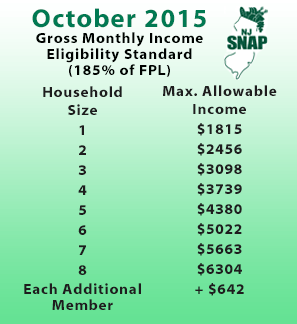
OTDA spokesperson Anthony Farmer pointed to the challenges of the pandemic as well. “What we weren’t prepared for was so many people leaving for better jobs.” “We expected more applications during the pandemic naturally,” the caseworker said.

Orange County has seen two to three times the number of SNAP applications since the pandemic started, even as staffing levels have declined, according to county spokesperson Justin Rodriguez. Social service agencies and the state’s Office of Temporary and Disability Assistance, which is supposed to oversee them, point to a sharp increase in applications during the pandemic. In Broome County, home to Binghamton, the figure was 45 percent. Just south along the Hudson River, Rockland County social services missed the deadline on 53 percent of open applications that month. By the end of the month, two-thirds of them - 1,242 people - had been waiting for more than the 30-day legal limit. Last October, the month Garcia applied, 1,910 applicants were waiting on a decision from the Orange County social services department. Pinned to a cork board, a sign made clear that SNAP applications must be approved or denied within 30 days. He’d gotten his benefits approved after waiting far longer than 30 days, he said, but still hadn’t received the PIN number he needed to use his EBT card, through which benefits are disbursed. He spoke only Spanish his 14-year-old daughter dealt with the county workers on his behalf. Many had taken time off work since the office is only open during weekday business hours.Ī gentleman wearing a wide-brimmed hat and cowboy boots was one of several who described long delays in getting their food stamp applications processed. Over the course of two hours on a Friday afternoon, about a dozen people passed through the office. In the drab waiting room, past a metal detector and under thin overhead lighting, people waited around on plastic chairs, most for at least 30 minutes.

New York Focus visited the Orange County benefits office in Goshen, where Garcia had applied for benefits, in early March. “And we’re talking tough birds, people who have been working here for 20-some years.” Delays made worse by COVID “Over the past year, I have not been to a supervisors meeting yet where someone has not broken down into tears,” one worker at a social service agency, who requested anonymity because they were not authorized to speak to the press, said. And it exacerbates what caseworkers describe as the biggest reason they’re struggling to keep up: there aren’t enough of them, and the acute lack of staff is fueling overwork and burnout. Experts say New York’s decentralized model, shared by only nine other states, is one underlying cause of the delays. The dramatic divergences between counties’ performances partly reflects the fact that each county administers its own social services. (Those two counties are also where New York City Mayor Eric Adams wants to send hundreds of asylum-seeking migrants.)

Neighboring Rockland County doesn’t do much better. In Orange County, where Garcia applied, more than half of applicants are left waiting longer than 30 days. In December of last year, the latest month for which New York Focus has data, the state’s 57 county social services offices outside New York City were illegally late in processing more than 11,000 food stamp claims - or one out of three open applications. But the problem extends across the state, where it has attracted little attention - in part because its scope has not previously been known. New York City is currently facing a lawsuit over its skyrocketing delays. Her youngest is 3 years old.Īcross the state, tens of thousands of New Yorkers who have applied for the federal Supplemental Nutrition Assistance Program, commonly known as food stamps, have had their benefits delayed for more than 30 days, in violation of federal law, documents obtained by New York Focus show. And as pandemic-era policies that streamlined benefits application processes expire, the backlog could get worse. “Where am I going to get food for my kids?” she asked. She borrowed money throughout the fall and winter to pay for groceries, and the resulting pile of debt couldn’t come at a worse time: She lost her longtime job as a receptionist in a dentist’s office when her boss retired last year. Then it transferred her to a new caseworker.įive months went by before the agency finally approved her new application - without making up for the lost time.

Then it closed her case and asked her to submit a new application. The local social service agency lost her paperwork and told her to go to another office. Garcia applied to renew her food stamps last October.


 0 kommentar(er)
0 kommentar(er)
